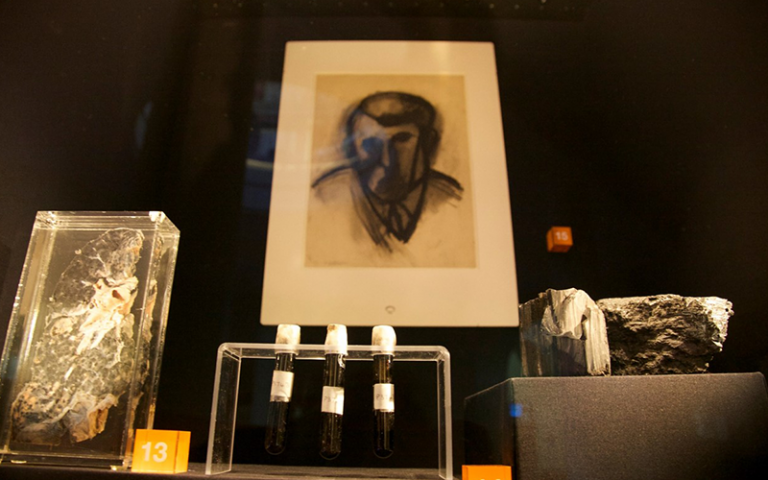Improving our treatment of cultural heritage for future generations
Dr Emma Richardson’s multifaceted research impacted the treatment of paintings in historic buildings, the use of LED lighting in museum displays, and the conservation of semi-synthetic archive film.

28 April 2022
Dr Emma Richardson (UCL History of Art) collaborated extensively with heritage institutions in the UK and North America (Historic Royal Palaces, English Heritage and Disney) to provide world-class, evidence-based research to improve the condition, care and conservation of cultural heritage.
Lighting world-class paintings for millions of visitors
The ceiling painting of the Queen’s Staircase painted by William Kent in 1734 is an at-risk heritage asset within Hampton Court Palace, the world-renowned historic royal building that drew 919,000 visitors in 2019.
Dr Richardson’s and Lora Angelova’s conservation trials coupled with onsite analysis provided a method for future treatment. Hampton Court Palace had been exploring solutions for this issue for 15 years.
Dr Richardson and Elizabeth Wooley’s 50,000-word report, ‘Assessing the Impact of LED Lighting on Pigments and Paper in Collections’, led English Heritage to initiate installation of LED lighting in their painting collections.
English Heritage, responsible for the care and conservation of 1,300 paintings, is able to effectively light paintings with LEDs knowing paint pigments will not be affected, and their visitors (over six million in 2018 across 400 sites) can view paintings with the best possible lighting conditions.
Safeguarding Disney’s animated films
Dr Richardson served on the Disney Animation Research Library (ARL) Advisory Board from 2014-2017. Her expertise shaped the methodology of a research project to determine the ARL’s new storage guidelines (published in January 2021), that safeguard the artwork of many thousands of animated films, which might otherwise be lost due to the plastic’s susceptibility to degradation.
Her research on cellulose-derived film formed an integral part of the concept and narrative of a film installation by artist Frances Scott: ‘PHX [X is for Xylonite]’ commissioned by Bow Arts in 2018 as part of their project ‘Raw Materials: Plastics’, was displayed at the Nunnery Gallery (London) 16 May-25 August 2019 (1,405 visitors) and shown at the New York Film Festival and London International Animation Festival, both in 2019.
The importance of preserving plastics
In 2016, Dr Richardson’s research led to the co-curation of the exhibition ‘Dangerous Diaries: Exploring Risks and Rewards in Fabrication’ held at the Octagon Gallery, UCL.
Dr Richardson interrogated the dichotomy between persistence in the environment and the need for preservation of plastics within collections in a BBC Four Documentary broadcast in November 2020, reaching 193,000 on first broadcast.
Research synopsis
Contributing to Cultural Heritage though Conservation Science: sustainable conservation and non-invasive analytical solutions for use in treatments, display and preservation
Dr Emma Richardson’s multifaceted scientific research has impacted three main areas of cultural heritage: the treatment of paintings in historic buildings, the use of LED lighting in museum and heritage display, and the conservation and preservation of semi-synthetic archive film. Research has been supported by Lora Angelova, and Elizabeth Wooley.
Links
- Dr Emma Richardson’s academic profile
- Dangerous Diaries: Exploring Risks and Rewards in Fabrication
- UCL History of Art
- UCL Faculty of Social & Historical Sciences
- UCL Social & Historical Sciences REF 2021
Image
- Image credit: Sarah Wilkes
 Close
Close

